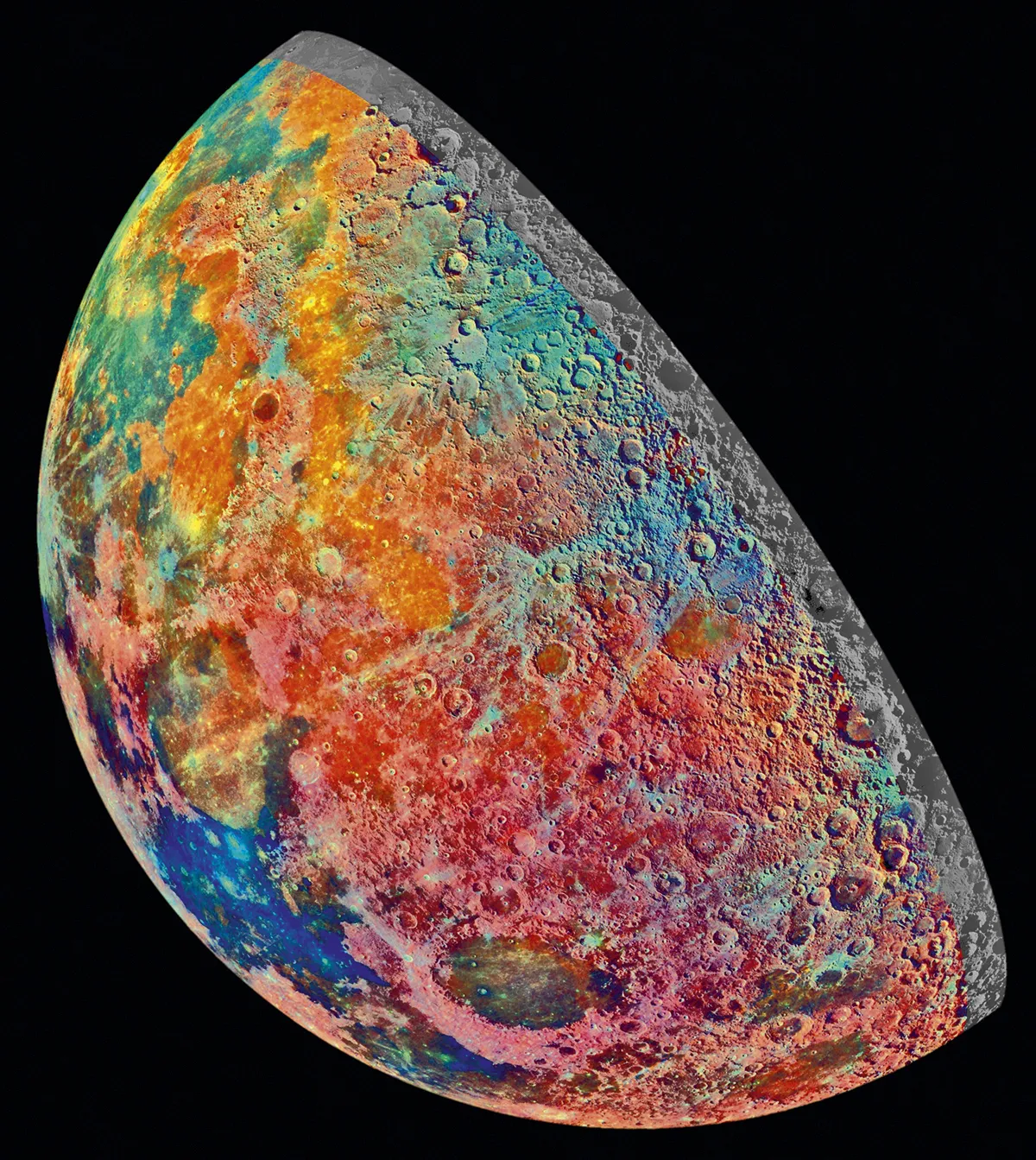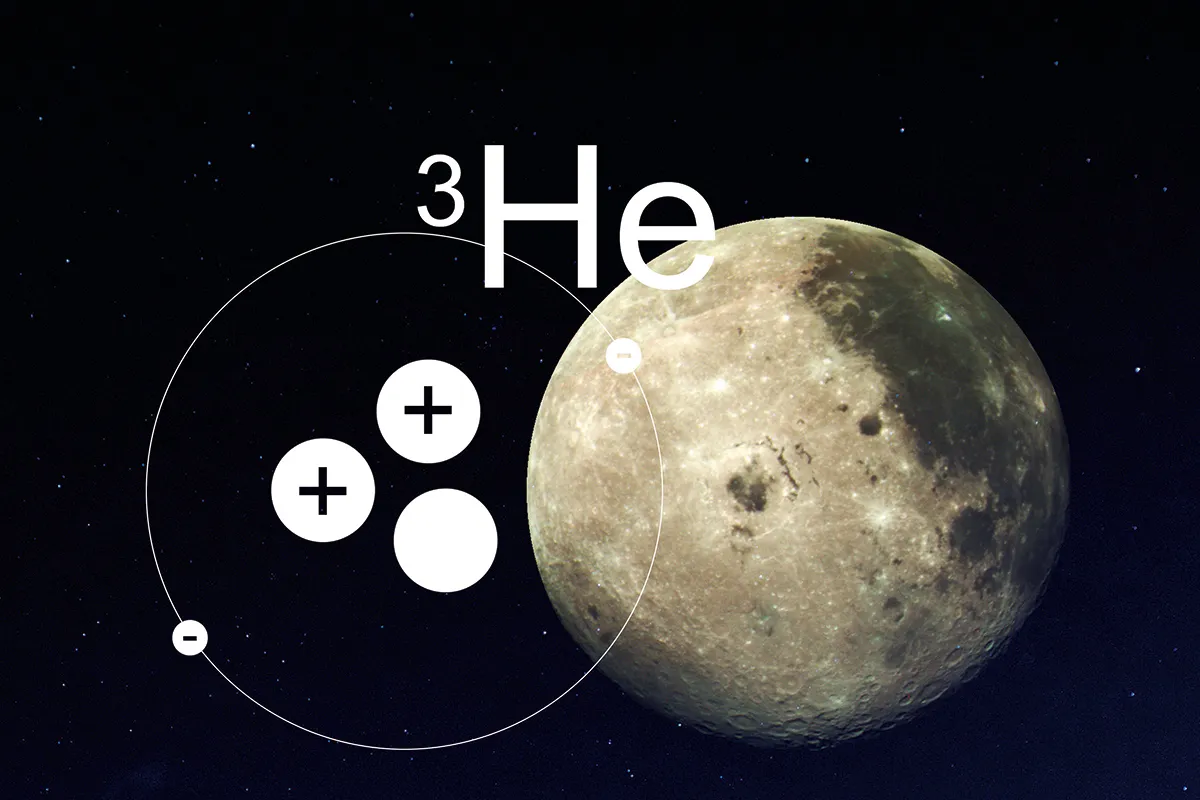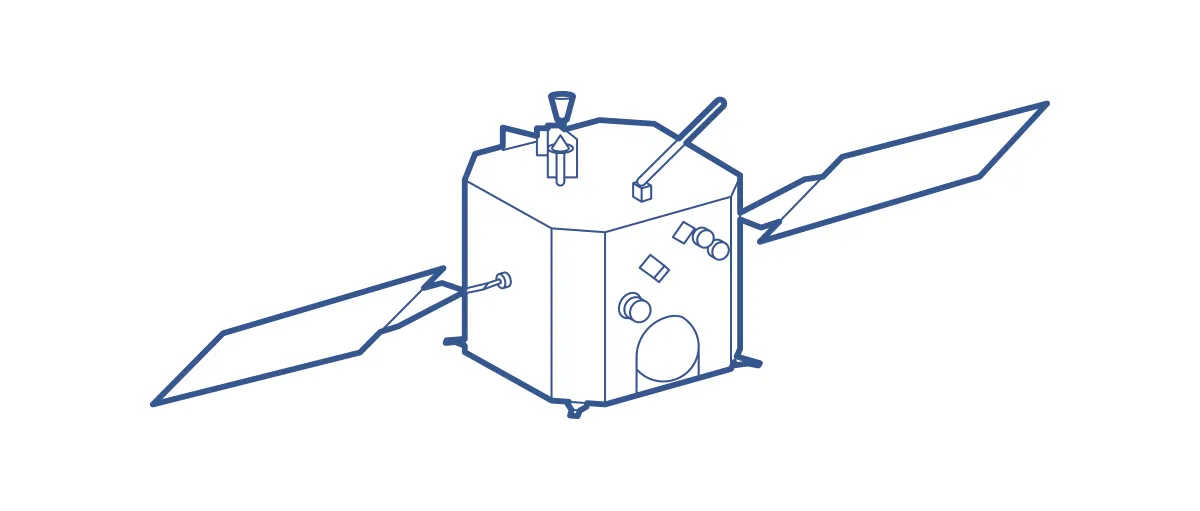In a prolific flurry of activity between 1969 and 1972, NASA landed 12 astronauts on the Moon. Starting with Neil Armstrong’s famous first steps, they explored the lunar surface, left experiments there for us to improve our knowledge and returned Moon rocks so we could learn about our neighbour’s history and origins.
Yet achieving those historic feats did not come cheap. The total cost of the Apollo programme in today’s money was $280bn, according to a recent estimate by The Planetary Society. That’s more than the GDP of 78 per cent of the world’s nations. Adjusting the value to take into account changes to the USA’s own GDP since the 1970s puts that figure at more like $641bn.
Ultimately, that money came from taxpayers, who were increasingly reluctant to sanction spending on something that had already been done six times. Schools and hospitals tend to be closer to people’s hearts.
Fast-forward to today and we’re in the midst of another space race, with a sizeable armada of spacecraft heading to the Moon in the years ahead. So what’s changed?
First, taxpayers are no longer footing the entire bill. The last decade has seen an explosion in the number of private space companies, led by famous names like Elon Musk’s SpaceX. By developing reusable rockets, they’ve driven down the cost of getting to space considerably. NASA already uses SpaceX technology to deliver astronauts and supplies to the International Space Station and they’ve inked deals to collaborate on sending landers to the Moon, too.
They’ve also hit upon a potential new revenue stream: space tourism. These reusable rockets could turn into celestial cruise ships, allowing the world’s billionaires to enjoy a week-long voyage around the Moon and back. They could even spend some time on the Moon itself, seeing Earth rise above its craggy, cratered surface. The eye-watering sums they’d pay could then be used to fund further lunar exploration.
Second, recent missions to the Moon have confirmed that it is home to important resources that are both key to building a permanent human presence on the Moon and kick-starting a new industry in space mining. Corporations are starting to see dollar signs and are investing in exploratory missions to further scope out what’s there and the feasibility of extracting it. Space tourism could help to pay for this otherwise loss-leading prospecting.
Then there’s the original motivation of going to the Moon: geopolitical bragging rights. Emerging superpowers such as China have made no secret of their desire to land their taikonauts on the Moon. The numbers of landers and rovers they are sending to the lunar surface is starting to ramp up in preparation for a show of strength and power in the next decade. NASA too is planning to return astronauts to the Moon before the decade is out.
The Space Race, it seems, is well and truly back on.
Read more about the future of the Moon:
- One giant joyride for humankind: The new breed of lunar rovers
- Forget rockets – a lunar elevator is the future of Moon travel
- How humanity will return to the Moon: The future of lunar exploration
What will the missions find?
The ultimate goal is to have a permanent human presence on the Moon – a base on which astronauts could routinely live and work. Many of the missions going to the Moon in the years ahead will help us learn how to pull this off.
One region that is going to see a lot of activity is the lunar south pole because there’s water there, which is an invaluable resource for keeping astronauts alive. “The evidence that water ice is sequestered in permanently shadowed polar craters has been growing for quite some time,” says Prof Ian Crawford, a space resources expert from Birkbeck, University of London.
Indian astronomers were the first to spot water from lunar orbit with their Chandrayaan-1 satellite in 2008. Then NASA detected water in plumes thrown up when it deliberately crashed the LCROSS spacecraft into a crater called Cabeus near the lunar south pole a year later. More recent missions have begun to map out where the water ice is hiding.
Upcoming missions will continue this quest, further surveying the region from orbit, while rovers will explore on the surface. The Chinese are even planning a miniature flying probe. NASA plans to send astronauts back to the Moon on Artemis III, probably sometime in 2026, and the south polar region is where they will head.

At the same time, NASA is part of an international collaboration that’s planning to build an orbital outpost around the Moon, known as Lunar Gateway. If it is ready in time, it will act as a staging ground from which Artemis astronauts could head down to the lunar surface. However, it would also be a place to drive lunar rovers from in real time without the 1.3-second delay caused by the signal travel time from Earth.
One big obstacle to permanently living on or around the Moon is radiation. Without the protection of Earth’s magnetic field and atmosphere, Moon-dwellers would be exposed to high-energy particles from the Sun and the Universe at large. Several upcoming missions are looking to measure these radiation levels in the hope that we can better understand how to protect astronauts from this considerable danger.
There are also scientific puzzles that we’d like to solve. The lunar rocks returned by the Apollo astronauts gave us valuable insights into the Moon’s formation and history, but there’s a lot of disagreement on how to interpret them. Robotic sample return missions will bring back more Moon rocks from a wider variety of locations on the lunar surface, helping to answer questions like how volcanically active the Moon still is.
On the industrial side, returning Moon material is a crucial step if we’re to make lunar mining a reality. NASA is partnering with private space companies, such as Astrobotic and Intuitive Machines, to test out the feasibility of putting commercial landers on the surface. As we’re about to see, that could be big business in the not-too-distant future.
What resources are there on the Moon?
Metal

Moving away from fossil fuels for good will require huge shifts in the way we build our infrastructure. Significantly growing the number of electric cars, solar panels and wind farms will require enormous quantities of metals known as ‘rare earths’, due to their scarcity.
The Moon rocks returned to the Earth by the Apollo astronauts showed that the Moon also contains some of these resources. According to Crawford, they might be hard to extract, in which case the financial cost of returning them from the Moon would make the endeavour unfeasible. Yet he can imagine a situation where we still might do it. “It might be economically worse, but environmentally beneficial,” he says.
That’s because extracting rare earth metals such as neodymium – used in magnets – leads to high levels of contamination of the surrounding environment. There may come a time when we deem the practice just too dirty and environmentally damaging to allow on the Earth. Yet we’ll still need to get those metals from somewhere. The Moon could be a pricier but greener option, leading to a multitrillion dollar market.
Helium-3

We’re in the midst of an energy crisis. We want to wean ourselves off fossil fuels, but in the meantime we’re starting to pay through the nose for oil and gas, thanks to COVID-induced supply chain disruptions and geopolitical tensions like those in Ukraine.
Nuclear fusion has long been lauded as a potential solution to our energy woes. The idea is to copy the way that the Sun creates its energy by turning hydrogen into helium. There are various ways to do this. One involves combining a rare type of hydrogen (called deuterium) with an even rarer type of helium (helium-3). The result is the more conventional form of helium (helium-4), protons and lots of energy.
We can extract deuterium from seawater, but helium-3 is so rare on Earth that it currently sells for $1.4m per kilogram. Some parts of the Moon, like the Sea of Tranquillity and the Ocean of Storms, have helium-3 concentrations of 20 parts per billion in the surface material. Without a magnetic field or atmosphere for protection, the lunar surface is bombarded by the solar wind, which deposits helium-3 there.
Although the economics of supply and demand means that bringing helium-3 back from the Moon would significantly drive down the price, at current levels there’s around $1.5 quadrillion worth of helium-3 on the Moon.
Water

If there’s one thing that Earth has in abundance, it’s water. There’s over a billion cubic kilometres of the stuff here. Yet water is also very heavy – a cubic metre of it weighs a tonne. It would cost more than $1m to get that into low Earth orbit, let alone to the Moon. Any water that’s already in space is therefore worth its weight in gold. This is particularly true given how versatile water is. Not only do we need it for astronauts to drink and clean with, but what’s inside water is particularly valuable.
A water molecule is famously H2O – two atoms of hydrogen bonded to one atom of oxygen. Both liquid oxygen and liquid hydrogen are used as rocket fuel. These two elements can be isolated from water using electrolysis, a process that sees an electric current passed through the water. Astronauts aboard the International Space Station already rely on it for their oxygen supply.
NASA is intending to land its Volatiles Investigating Polar Exploration Rover, or VIPER, on the lunar south pole in late 2023 “to get a close-up view of the location and concentration of water ice that could eventually be harvested to sustain human exploration on the Moon, Mars – and beyond.”
Water is so valuable that the Moon could become the refuelling station of the Solar System. Getting water off the lunar surface – where gravity is just one-sixth of the Earth’s – is considerably more appealing. A 2019 study calculated that “water produced on the Moon has a current value of $10m per tonne, this value being based on the current costs to supply it from Earth.” NASA estimates there could be 600 million tonnes of water ice on the Moon.
Who will own the Moon's resources?
There are people who will try and sell you an acre of the Moon. It’s supposedly yours for a bargain basement price of $25. One company has made millions off the back of it, but are you really getting your own little piece of lunar real estate?
The ownership of the Moon is a somewhat legal grey area. “The key legal framework here is the 1967 UN Outer Space Treaty,” says Crawford. “It made clear that no nation state can claim the Moon.” Over 100 countries are signatories to the treaty, including all the major spacefaring nations. It specifically states that:
- Outer space shall be free for exploration and use by all countries
- Outer space is not subject to national appropriation or ownership
The treaty was designed at the height of the Cold War in an attempt to prevent space becoming another theatre of warfare, including as a place from which to launch nuclear weapons. It has had some interesting consequences, however.
For example, the US owns Apollo artefacts, such as landers, experiments and flags, that were left on the Moon. But it doesn’t own the land where the historic first footprints still stand. There was talk of turning the area into a US National Park, but that would seem to violate the treaty. No piece of the Moon can be explicitly American. How we preserve our space history is an ongoing debate, though.
Given its aim to avert a space war, the treaty only mentions nation states. It fails to spell out the situation for private corporations. Some saw that as a green light to claim ownership of the Moon and start hawking acres. “The legal situation is a bit ambiguous,” Crawford says.
The same goes for any business seeking to make a profit from the Moon’s resources. In 2015, the US passed the Commercial Space Launch Competitiveness Act, which made space mining legal. Other countries have introduced similar laws. “There have been some vociferous objectors to this,” Crawford says. “International law needs updating.”
There have previously been attempts to clarify the situation. In 1979, the Moon Treaty was proposed. It would have established clearer rules regarding the Moon’s resources, but no major spacefaring nation has signed it.

In recent years, those concerned about the Moon’s future have drafted the Declaration of the Rights of the Moon. Clause 2a states that the Moon has “the right to exist, persist and continue its vital cycles unaltered, unharmed and unpolluted by human beings.” Although, again, it remains unratified.
Ultimately, Crawford thinks that the situation is similar to fishing in international waters. Outside territorial waters nobody owns the sea, but if you invest in a boat and collect some fish, then international law entitles you to those fish. “Your rights of ownership are derived from the fact that you’ve put in your labour and your capital to extract from a common resource,” Crawford says. Likewise, “if a commercial operator were to mine lunar materials... then they would be entitled to sell or trade in those materials.”
Dr Evie Kendal, from Swinburne University of Technology in Australia, says it’s an idea that stretches back thousands of years, pointing to the Roman concept of res communis, where there is no right to ownership of a communal good, but there is the right to use and freely access it.
Kendal also points to a potential legal minefield if humans are involved in the mining process. “Concerns about worker rights in a future lunar mining colony focus on the fact that living quarters and mining facilities are likely to be geographically and financially linked. In other words, employers will literally control the air their workers breathe,” she says. “This opens up the potential for significant exploitation of workers, especially when considering that regulatory bodies might be very distant, limiting potential oversight.”
A solution would be to strengthen employment laws to cover the situation. Kendal says that could include “a guaranteed passage back to Earth should an employee no longer wish to be employed in the facility.”
Timeline of our return to the Moon
A rundown of future missions to the Moon, both real (near-term) and imagined (long-term).
May 2022

NASA will launch the Cislunar Autonomous Positioning System Technology Operations and Navigation Experiment (CAPSTONE). It’s a technology demonstration mission to test and verify the stability of the intended orbit of Gateway.
July 2022

Roscosmos, the Russian space agency, is set to send its Luna 25 lander to the Moon. It will touch down near the lunar south pole at the Boguslawsky crater.
August 2022

South Korea will use its Pathfinder Lunar Orbiter to survey and map lunar resources, including ice and helium-3.
October 2022

Private Japanese space company ispace will send a lunar lander called Hakuto-R Mission 1 to the Moon. It will also carry a lunar rover for the United Arab Emirates.
Late 2022

Efforts to commercialise the Moon will ramp up with the launch of Intuitive Machines 1 and 2 (IM-1 and IM-2). A collaboration with NASA, these landers are designed to deliver commercial payloads to the lunar surface.
2023

The first Moon tourists will fly around the Moon and return to the Earth aboard a SpaceX Starship, thanks to the deep pockets of Japanese billionaire Yusaku Maezawa.
Before March 2023

The Japanese Space Agency (JAXA) will carry out its first ever lunar surface mission called Smart Lander for Investigating the Moon (SLIM).
November 2023

NASA’s Volatiles Investigating Polar Exploration Rover (VIPER) will begin prospecting for water ice around the lunar south pole.
Mid to late 2023

In a demonstration of increasing public/private cooperation, Firefly Aerospace’s Blue Ghost and Masten Space Systems’ XL-1 landers will both carry NASA-sponsored experiments and commercial payloads to the Moon.
Late 2023

The Australia Lunar Exploration Mission will send nanosatellites in order to help NASA’s Artemis programme. The Dutch will also send Laika to measure the radiation at the lunar south pole ahead of future human bases there.
2024

Chang’e 7 will see the Chinese land on the lunar south pole and send out both a rover and a flying probe to prospect for lunar resources. They’ll be cooperating with the Russian Luna 26 orbiter that will be there at a similar time. Chang’e 6 could return samples from the lunar surface.
2024

ispace will send both a lander and a rover to the Moon. Jeff Bezos’s space company Blue Origin plans to land on the Moon and NASA will begin to send key elements for building Gateway into lunar orbit.
2026

NASA will return humans to the Moon for the first time since 1972, including the first female astronaut and minority ethnic astronaut.
2027

China’s Chang’e 8 could explore how to turn lunar resources at the Moon’s south pole into usable materials through 3D printing.
2030

Gateway, which is like a version of the International Space Station in lunar orbit, will finally be finished. Astronauts will start to spend months living around the Moon.
2035?

Astronauts begin living on the lunar surface for extended periods near the Moon’s south pole, just as we currently do with Antarctic research stations. It will largely be funded by paying Moon tourists.
2040?

A flourishing lunar industry will see people relocate to the Moon to work in the mining sector. Helium-3 is returned to the Earth to sustain the latest fusion reactors powering the planet.
2050?

With climate change starting to really bite on Earth, more of our heavy industry will be moved to the lunar surface and the Moon will become a launch pad for regular crewed trips to Mars.
- This article first appeared inissue 376ofBBC Science Focus Magazine–find out how to subscribe here
Read more about space exploration:
- James Webb Space Telescope: Everything you need to know about the Hubble successor
- Project Galileo: The search for alien tech hiding in our Solar System
- Axiom-1: Everything you need to know about the first private mission to the ISS
- JUICE: What secrets lie beneath the icy surface of Jupiter’s moons?
